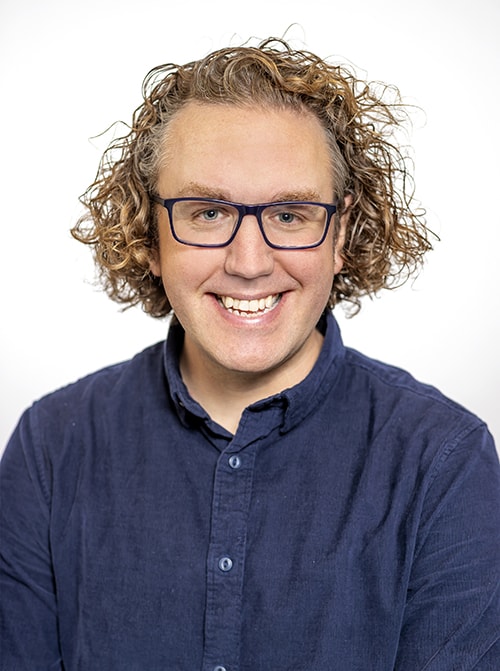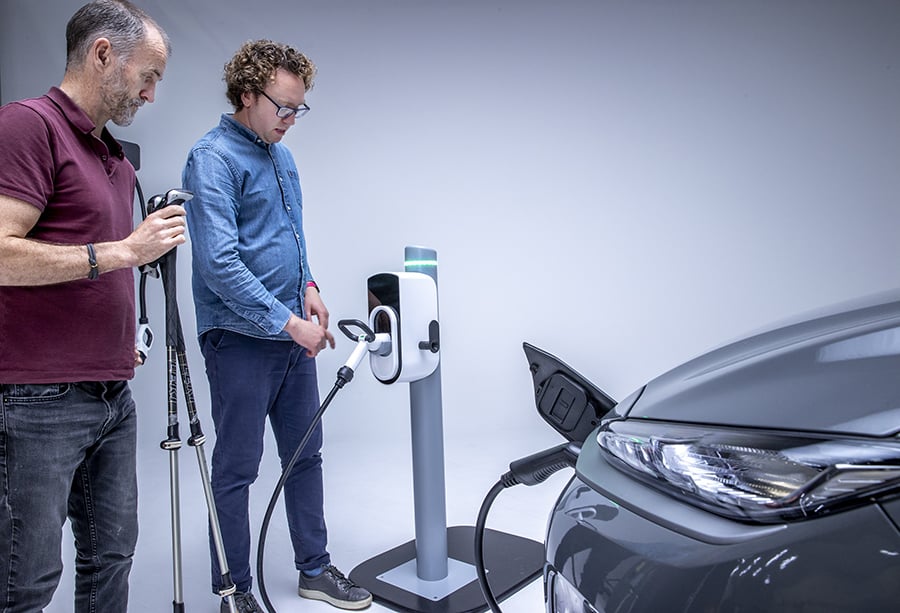EXCLUSIVE: A day in the life of an assistive technology design and innovation manager

Keir discusses the importance of engaging the users of products early and often in the design process to ensure the delivery of solutions that meet their aspirations.
Describe your current role
“As Design and Innovation Manager, I lead projects that seek to understand the needs of disabled people when interacting with a particular product or service, completing day-to-day activities, or doing something they really enjoy.
“My responsibility is to ensure we follow an evidenced-based, person-centred design approach. I work within a small team of designers, engineers, and researchers to understand the problem space, set design requirements, and then create design solutions that deliver a positive impact for people.”
What does a typical day in your role look like?
“I know it’s a cliché, but I don’t have a typical day!
“As a project lead and designer, I might be working closely with research colleagues to plan a piece of design research, unpicking a complex problem, meeting external clients, engaging with disabled people, coming up with design ideas, or speaking about our work at a national event.
“It is what makes my role so interesting and rewarding – that I can be involved at many different stages in a project, from helping to shape the project brief, to adding the final touches to a product prototype I may have designed, and watching someone use it for the first time.”
What sort of assistive technologies do you work with?
“Designability manufactures products to support people with a physical disability and our strategic focus right now is mobility and transport. I have recently been involved with the early design and testing of a pushchair for wheelchair users. However, most of my work focusses on ensuring that mainstream products are suitable for people with a wide range of disabilities.
“Last year we worked closely with over 200 disabled vehicle users to develop charging prototypes and design guidance to inspire the electric vehicle charging industry to create products that better meet the needs of disabled users. As part of this work, I also contributed to a technical steering group to inform the development of a new British standard specification for accessible EV charging.”
Who do you work with?
“Our team is made up of designers, engineers, researchers, technicians, and clinicians, as well as the administrative, communications, and fundraising staff who make all of this work possible. We all work closely together to understand the needs of disabled people and come up with innovative ideas for new products that will increase independence and allow people to do the things that they enjoy.
“I also work very closely with disabled people throughout projects to help inspire our work, test our ideas, and provide healthy challenges.
“On a client side, I am working with other charities, research organisations, industry experts, and professionals who give me an insight into how they deliver products and services. This enables me to appreciate commercial constraints or regulatory environments so that we are delivering solutions that not only meet the needs of disabled people, but that are also feasible, realistic, and achievable.”

What do you like most about your role?
“My best day would be one where I get to go out and meet people in their world.
“To observe the way that they complete everyday tasks, or the things they get the most joy from, to listen to them share their experiences (good or bad), and to begin to imagine how we might work together to come up with design solutions that could enhance their independence and the ease with which they complete an activity.
“I also love being able to see someone use a product I have designed for the first time and hear them share what impact it has on their life.”
Are there any challenges that you face?
“I am an optimist; every designer needs that trait. We are required to give people a vision of something new and different, so for me challenges are part of every project and are exciting.
“That said, I think the biggest challenge I have experienced in my role is getting people to understand the importance of considering all potential users of their products from the very start.
“I would love to see organisations choosing to take that approach because it is the right thing to do and there is a deep understanding of why everyone counts, rather than because it is required of them or others tell them they should do it.
“If I can influence and impress on the people that I work with in my role now and throughout my career, the real value in ‘design for all’ as standard practice, and for that to become the norm – I will be very happy.”
Tips and tricks for getting into the role
“Get good at listening.
“As a designer, one of your most valuable tools is the ability to listen and observe those that you are designing products for. In the early stages of projects, I spend as much time engaging with disabled people and industry stakeholders to really understand the problem as I do designing potential solutions.”

